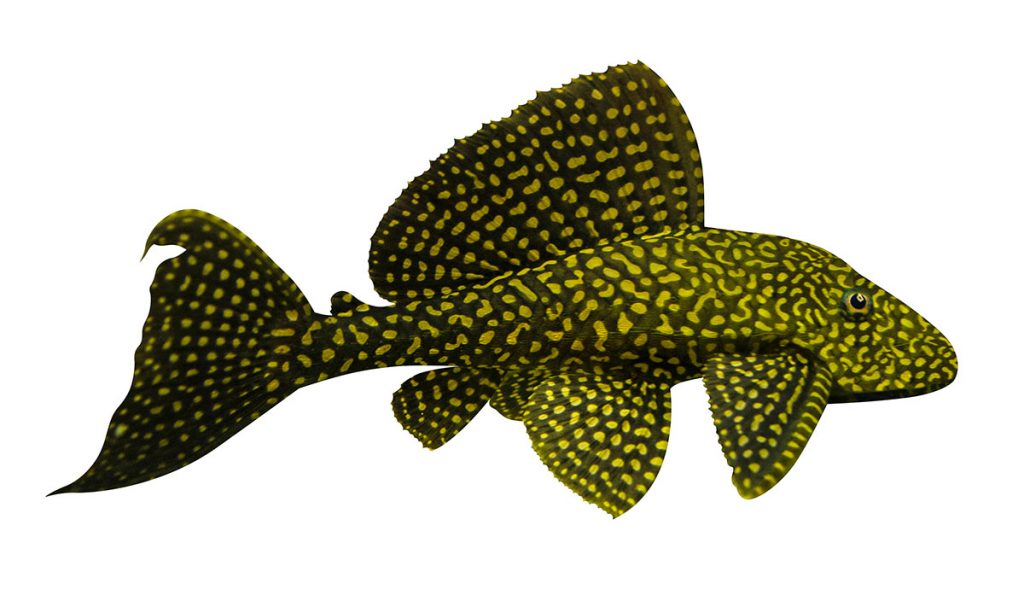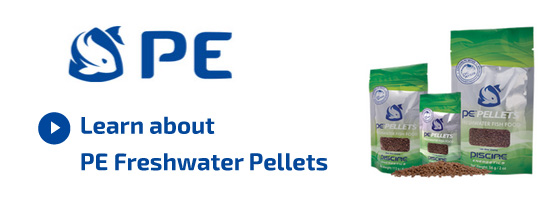Plecostomus Species
Plecostomus
The term Pleco is often used to describe fish from the genus Loricariidae, also known as the sucker mouth catfish. The Loricariidae family is highly diverse with many different genus and species. In fact, new species are being discovered so quickly that scientists have hardly been able to keep up with naming them. For the time being, many species are simply designated an “L-number” as a species identifier.
The Bushynose Pleco (Ancisturs sp.) is one of the most commonly sold species or cory cat. Other common species include Trinidad Plecostomus (Hypostomus punctatus), Sailfin Plecostomus (Pterygoplichtys gibbiceps), Royal Plecostomus (Panaque nigrolineatus) and the Gold Nugget Plecostomus (Baryancistrus sp.).
Biology
Plecos are native to parts of tropical and subtropical Central and South America. Some species can be found in slower moving or stagnant waters, however many are native to fast flowing streams. One of the most unique aspects of the Plecos is their unique, modified mouths that allow them to grasp onto driftwood, rocks and other debris. While some plecos will eat algae, many species are more appropriately classified as detritivores, and some species eat exclusively driftwood.
Captive Care
Plecostomus can make great aquarium inhabitants, provided their husbandry needs such as diet, water quality and tank space are met.
Temperature range for plecos varies widely, dependent upon the species. Interestingly, a sudden drop in water temperature, such as a large water change with cool water will stimulate breeding in some pleco species. Plecos are generally considered good members of community tanks, however some species may become aggressive or view smaller tank mates as potential food.
It is important to consider carefully what species of pleco may be best for your aquarium. While smaller species such as the Bushynose Pleco (Ancisturs sp.) are suited to tanks as small as twenty gallons, larger species such as the Sailfin Pleco (Pterygoplichtys gibbiceps) may be better suited to a larger tank.
Suggested Piscine Energetics Products
We suggest a diet based on Piscine Energetics Frozen Mysis, Piscine Energetics Frozen Calanus, Piscine Energetics Pellets (1mm, 2mm and 3mm).
What people are saying about PE:
After feeding my seahorses your mysis for about 3 months; they are fat and happy!!! they give me baby seahorses (at least 300 ) each 14 days... So I'm very satisfied of your mysis.The frozen mysis is about 70 per cent of their diet.
Yvan Charbonneau Quebec
I am keeping these Indian mudskippers -- very cute -- about 3-4 inches long. I've been feeding them frozen bloodworm, and decided to try them on mysis. I feed them in a "shallows" in the 150 I have set up for them. The minute the mysis hit the water they were on it, frozen and all. They gorged until their little bellies were almost bursting. I have yet to see an aquatic creature that does not go absolutely nuts over PE Mysis.
David Lass Massachusetts
I picked up my Mysis today and they arrived wonderfully. All the fish I fed them to, absolutely devoured them. They are my Frontosas new favorite food. All my Discus ate them up eagerly...heads and all!! I want to thank you again for your excellent service and product.
Pierre Brenton Nova Scotia
I have a large saltwater aquarium (220 gallons) with very expensive fishes and invertebrates. I tried to feed them with your PE Mysis and they really went crazy about it. Since that time, some of my fishes refuse any other product I offer them!





